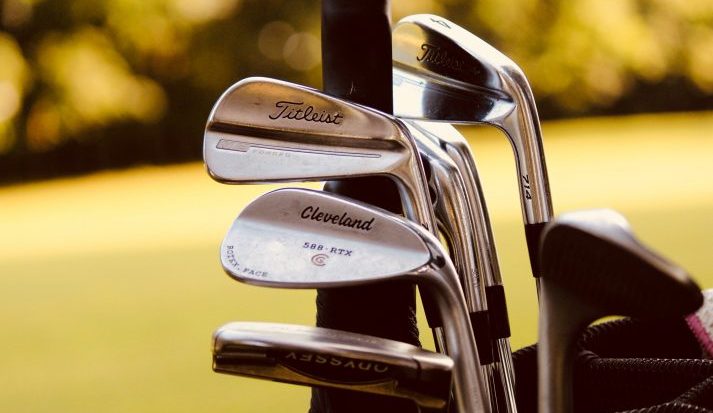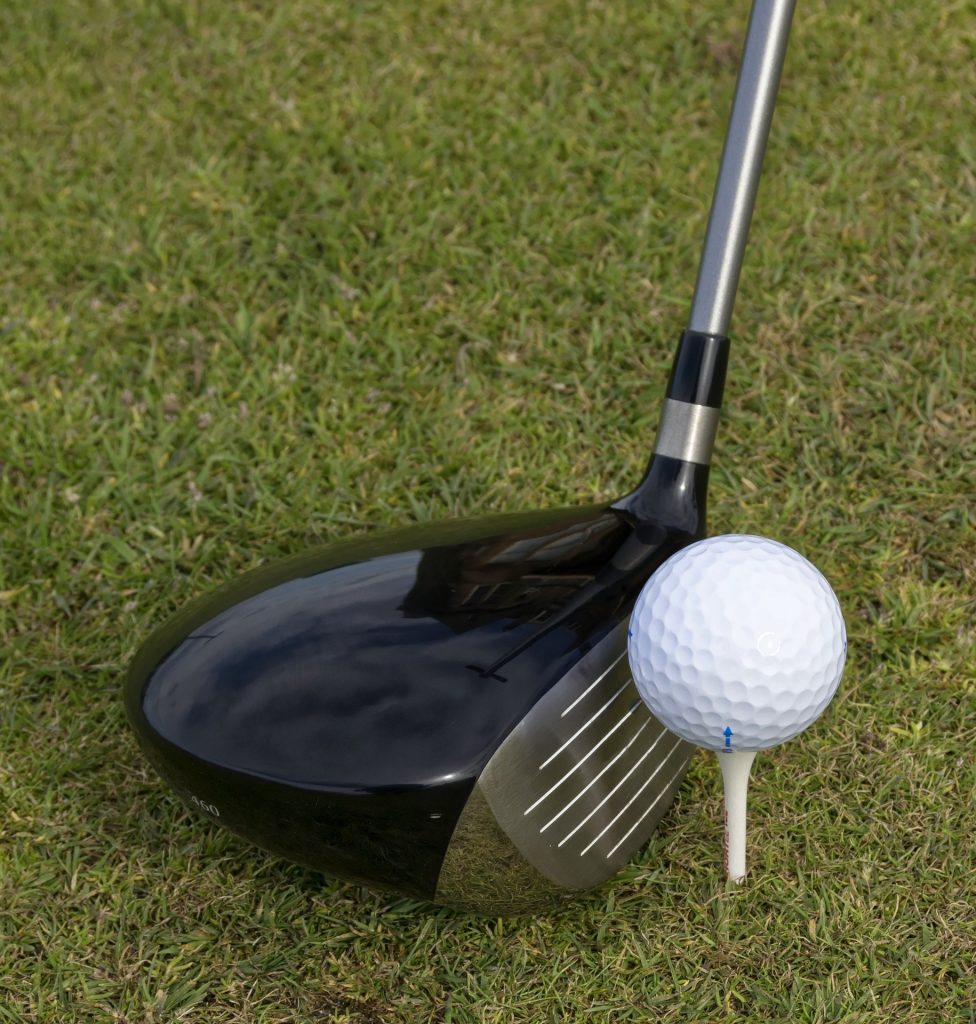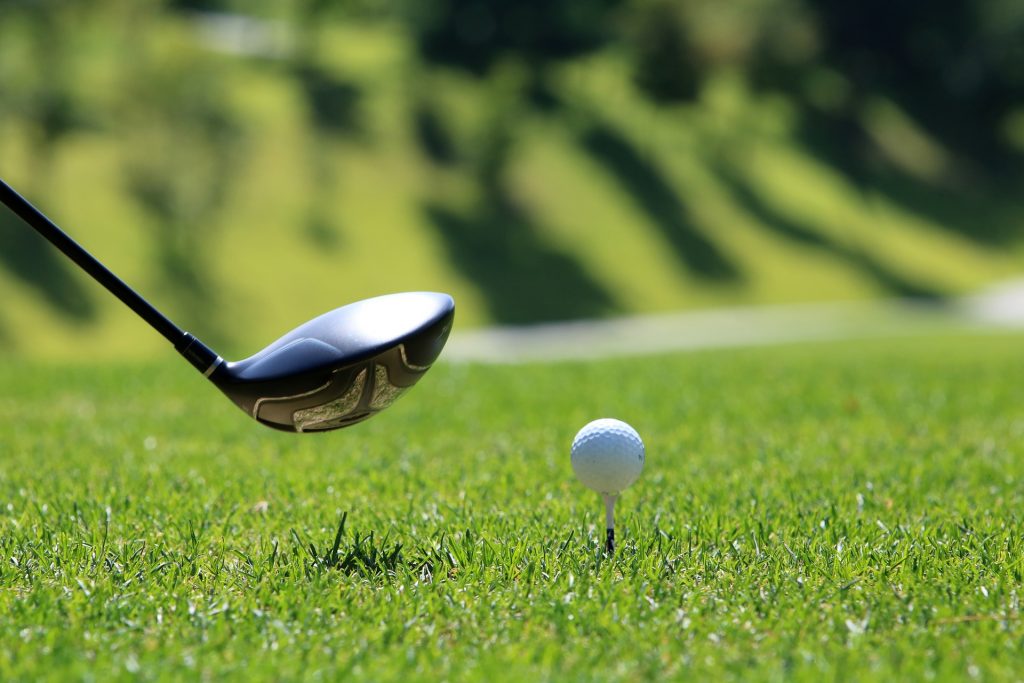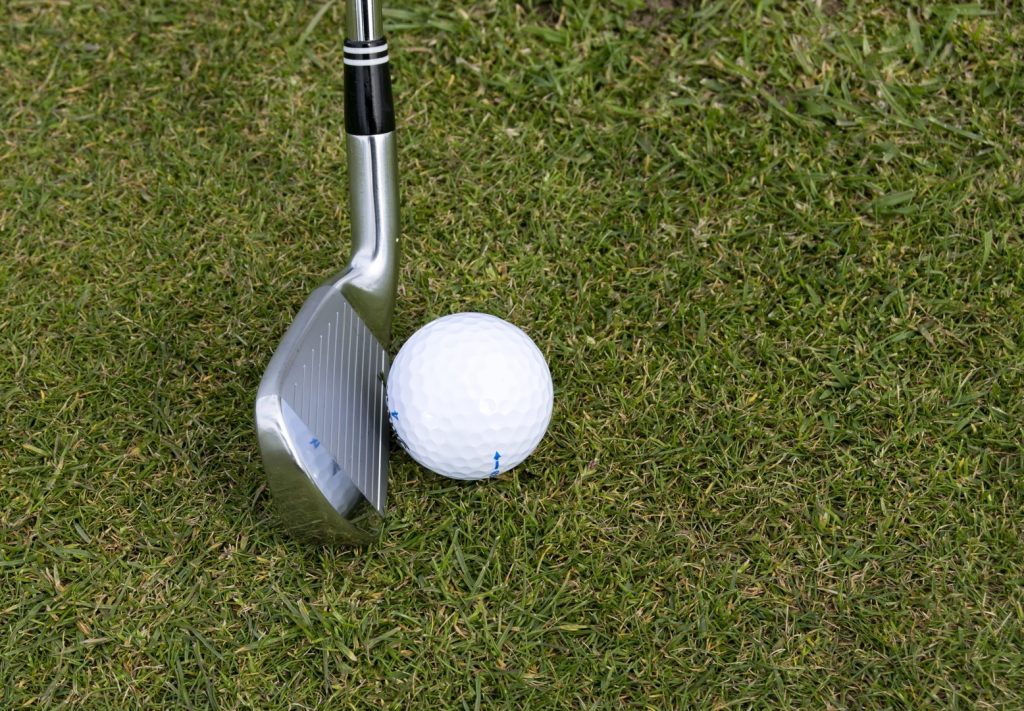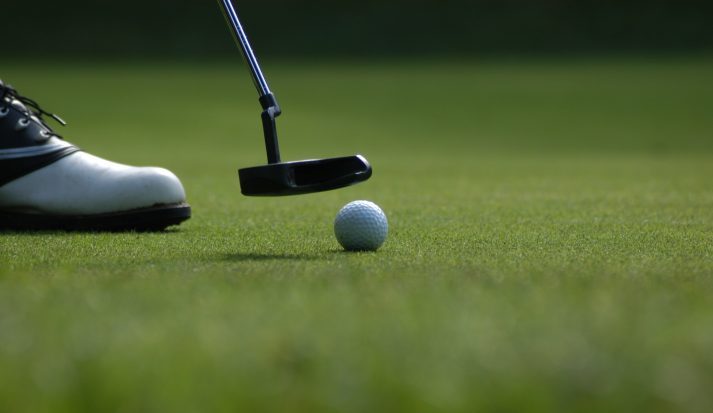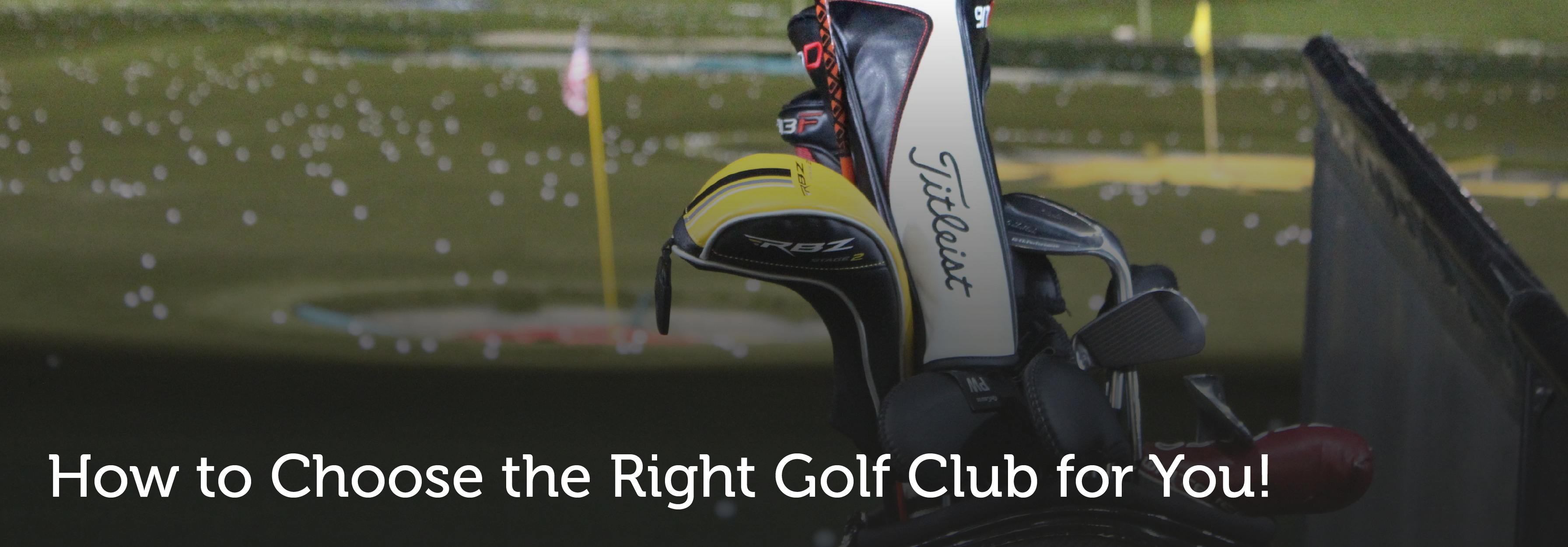
How to Choose the Right Golf Club for You!
Whether you are thinking of playing golf for the first time or you’re a seasoned pro planning ahead of your next golf trip, choosing the right golf clubs is key to your performance. Using the right clubs can change the way you play on the golf course and help you reduce your handicap dramatically.
But which golf clubs should you buy? What should you look for when choosing your golf clubs?
Whatever your ability, whether you are buying one club or a full set, the sheer volume of clubs on the market can be overwhelming.
To make choosing the right golf clubs less daunting, we’ve shared our top tips to help you make the right choice.
Contents
1. Golf Club Essentials
Whether completely new to the sport, or a golfing enthusiast, you should think about the same six things when trying to choose the right golf clubs.
Take your time
The sheer volume of golf clubs on the market is enough to confuse the most experienced golf professional.
Depending on your ability and budget, buying a new golf club can be a significant investment, so it’s important to do your research and not make any spontaneous decisions.
Ignore the name
If you regularly watch European Tour events, it’s easy to think buying the same make and model as your favourite professionals will help you score well on your golf holiday.
By all means, use this insight to help you choose your clubs, but be willing to try and test other brands too. As golf club technology has advanced, manufacturers have targeted different players when creating the latest models.
From body type and gender to physical condition and ability needs, focus on the clubs that cater to your requirements and not the name. After all, it’s your score that counts.
Grip Thickness
The thickness of the grip can have a massive effect on your swing. A grip that is too thin can lead to golfers having large hand actions leading into the swing. However, too thick a grip will restrict your hands and have an equally devastating impact.
What does the right grip look like?
The proper grip should let you hold the club using your middle and ring fingers of your left hand with very little touching the pad with the thumb. If your finger doesn’t touch your thumb, it’s a sign that the grip is too big.
The Shaft
Although obvious, getting the correct length of shaft is a fundamental consideration when buying golf clubs.
Key considerations to check are your height, body type and physical strength.
As a general rule, taller players usually need a longer shaft to play at their best.
In addition, you should also consider the shaft flex and its suitability to your swing.
Selecting a shaft too stiff will cause lower ball flight and a loss of distance, whereas a shaft too soft can result in ballooning and, again, loss in distance.
How can you judge if the shaft flex is correct? Shafts too stiff usually make you slice the ball to the right whilst shafts too soft hook your ball fly to the left.
Loft
A vital measurement, the loft, or loft angle, refers to the angle formed by a line running down the centre of the shaft and the face of the club.
Measured in degrees, a golf club with a relatively low loft, such as 3 iron sitting at 21–23 degrees, will make the ball go further than one with a higher loft. Alternatively, a golf club with a high loft, such as a 9 iron sitting at 45–48 degrees, will result in the ball rising and descending into the air on a steeper angle.
You can judge the loft by how much of the face of a club is angled upward or how much the top of the face is angled away from the shaft. Visually, a clubface with a higher degree of loft will appear to be more horizontally angled compared to that of one with a lower degree.
The clubhead
If you want to make the most of your golf club, having different sized clubheads can be a real advantage. Most brands offer standard, midsize and oversized heads for their golf clubs and your choice of clubhead size is mainly dependent on your experience level.
Generally, the larger the club head, the more forgiveness your swing has. Although you can make a poor hit and still achieve a good result with an oversized head, these are often heavy and hard to control.
2. Golf Clubs for Beginners
It’s very easy to get caught up in the initial enthusiasm of starting a new sport and buying the best golf gear, but beginners beware.
Golf clubs are best bought slowly, collecting more advanced ones as your experience increases and you progress in the sport.
If you are just getting your first taste of golf, it’s well worth borrowing a set or buying used clubs. Once you have played a couple of rounds and have become familiar with the game, you can decide if you want to continue and buy your first golf clubs.
As we’ve explained previously, custom-fitted or top brand name clubs are not necessary or suitable for beginners. For your first golf clubs, we recommend buying a beginner set of clubs that include a driver and 3-wood, odd-numbered irons (3, 5, 7, 9) and a putter.
Apart from the basic decisions between men’s and women’s clubs and right or left-handed clubs, you might have a choice between steel and graphite shaft clubs. At this stage, we recommend choosing steel shafts as they are more durable and less expensive.
3. Golf Clubs for Intermediate & Experienced Golfers
For players with a year or more experience, you might want to start building a set of golf clubs that is more tailored to your physical characteristics and ability.
Intermediate players should begin to slowly build their set as their game improves over the years.
For experienced players, considering the top brand names and latest models is not such a risky investment. Whilst your understanding of your strengths and weaknesses will guide your choice, custom fitting could also be an option. Tailoring the club shaft length and flex, and club head lie angle and loft to your specifications, is a worthwhile investment if you are looking to become a serious golfer.
4. Type of Golf Clubs
4.1 Driver
Used off the tee on long holes, the purpose of using a driver is to hit the ball as far as you can.
Measured by volume in cubic centimetres, the biggest driver head allowed is 460cc.
Most drivers are made of titanium and/or carbon composite because they are much lighter than steel, letting manufacturers increase the size of the head.
If you are buying used drivers or those manufactured prior to January 2008, ensure that they are still legal for club competitions. The maximum legal Coefficient of Restitution is now 0.83, which means that if you hit a golf ball at a clubface of 100mph, the rebound would be 83mph. If a rebound is at a higher speed, the driver would be deemed illegal.
Driver Models
In addition to the standard models, golfers also have a choice of ‘Offset’, ‘Draw’ and ‘Neutral’ options. These options help to fix golfers slicing the ball (e.g. balls veering right unintentionally for right-handed golfers) by placing weight inside the clubhead to help you keep it more ‘closed’ at impact.
Driver Shape
Another consideration is the shape of the head. Manufactured by a few brands, square-shaped drivers help players align tee shots and visualise the line of shot much easier than traditional shaped drivers.
Driver Loft
Typically, the loft of drivers ranges from 8 degrees to 13 degrees. When deciding what loft to select, you should consider the speed of your swing:
- Fast swing? Clubs with a loft of 8-9 degrees are great for very powerful golfers who want to hit further. ‘Normal’ players should avoid these clubs as they will achieve less distance.
- Slower swing? Ideal for seniors, juniors or ladies, a club with a loft between 12-13 will help get the ball airborne more easily.
- Average swing? Most players opt for a loft between 9-11 degrees which suits all handicaps.
4.2 Woods
When considering what woods to purchase, your first consideration should be what you want to use it for. Do you want to hit off the tee or replace long irons? Maybe you want to reach par 5s in two on your golf holiday? Whatever your reason, this should guide your purchase.
Which Wood?
When deciding which golf club number (3, 5, 7 etc) to purchase, think of the following:
- The higher the golf club number, the higher the loft.
- The higher the golf club number, the shorter the club shaft length.
Wood Shafts
Golfers have a choice of graphite or steel shafted woods:
- Graphite woods tend to be more popular and generally reach a further distance.
- Steel woods help to achieve a lower, more accurate ball flight.
Wood Head Design
Just like with drivers, manufacturers offer a choice of ‘Offset’, ‘Draw’ or ‘Neutral’ head designs on woods.
Attempting to correct any side-spin on the ball, weight has been placed inside the clubhead to help keep it square at impact.
Wood Head Material
There are three choices of head material to choose from, each with its own characteristics:
- Steel – Not too expensive and durable, steel is the most popular material.
- Titanium – Great for hitting from the tee, titanium is half the weight of steel and helps to get the ball airborne sooner.
- Composite – Combining materials such as carbon with steel or titanium, this material is great for fixing twisting or off-centre hits.
4.3 Irons
Making up the bulk of your set, irons are numbered like woods.
With the lowest loft (around 20 degrees), the 3 irons achieve a low and long hit with approximately 200 yards. In contrast, a Pitching Wedge (50 degrees loft) or Sand Wedge (56 degrees loft) produce a high flight but a low distance of approximately 100 yards.
Other irons such as the 7-iron sit between these two extremes, with around 12-15 yards difference between each club.
Essentially, the lower the golf club number is, the lower the flight, the further it will travel but the harder it is to control.
Which weight?
Like woods and drivers, irons offer different models depending on your needs:
- Perimeter-weighted Irons – Having more weight around the perimeter of the head, these are much easier to hit and help get the ball airborne easily.
- Offset & draw weighted Irons – Designed to keep your hands ahead of the ball, these clubs help counteract slicing.
Casting or Forging?
Golfers choose between two manufacturing processes when buying a new iron:
Cast Irons
Aimed at low handicappers, most irons are made by casting as this process allows manufacturers to design more creatively.
Common terms used include:
- Cast 17-4 stainless steel – strong, durable and very hard.
- 431 stainless steel – softer than 17-4 but has a better ‘feel’.
Forged Irons
Using a softer metal than cast irons, forged irons are often said to have a better ‘feel’.
Iron Shafts
- Steel Shafts – Steel shafts are the most popular option and are considerably cheaper than graphite shafts. More durable than graphite, it offers consistency of flex and torque throughout all of the irons.
- Graphite Shafts – Lighter than steel shafts, graphite shafts absorb vibration better than steel shafts but offer less feedback on impact.
4.4 Wedge
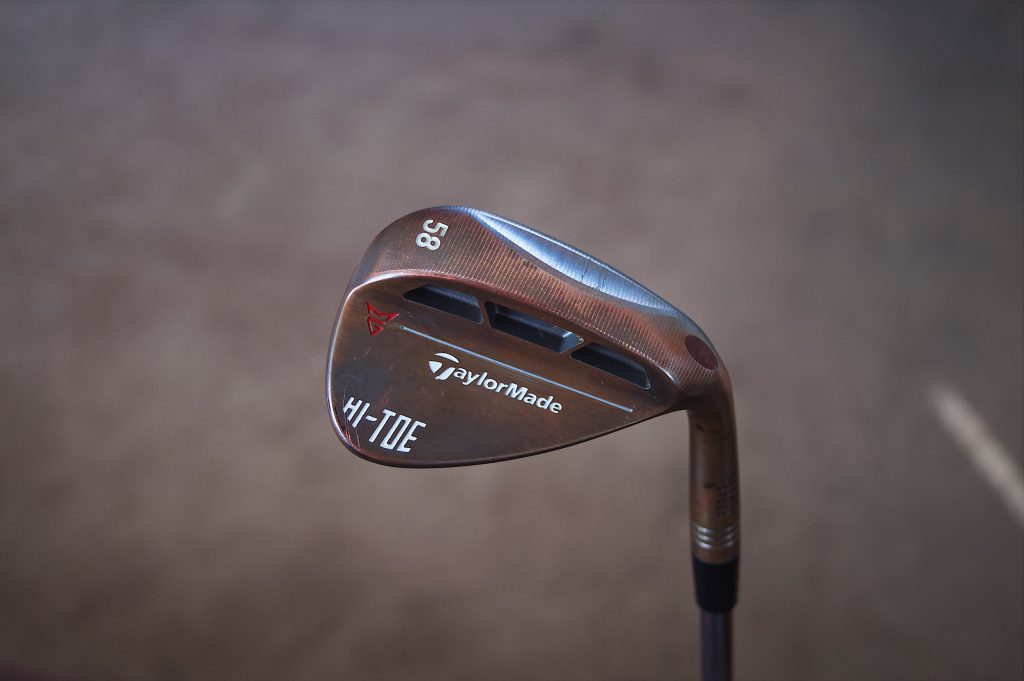
Wedge Loft
- Pitching Wedge (PW) – Usually featuring a loft between 46 and 50 degrees, the PW is used for shots of around 120 yards into the green.
- Gap or Approach Wedge (GW) or (AW) – More lofted than a PW, the approach wedge has a loft between 50-55 degrees.
- Sand Wedge (SW) – Generally used for bunker play, SWs have a loft of 54-58 degrees.
- Lob Wedge (LW) – With a loft between 60 and 64 degrees, LWs are ideal for high flights from short distances.
Bounce Angle
Referring to the curved section on the sole of the wedge, the ‘bounce’ prevents the club from snagging in the sand or rough.
Visually, the bounce is the gap between the ground and the leading edge of the wedge when placed in the address position.
As a general rule, most golfers are best with a bounce between 10 to 14 degrees.
- High Bounce Wedges – Those with a high space between the ground and the leading edge, the biggest bounce is around 18 degrees. Best for play out of soft turf and sand, they are good for golfers with steep attack angles.
- Low Bounce Wedges – Ideal for shots from tight lies and firm turf, low bounce wedges are best for those who have shallow attack angles through impact.
- Standard Bounce Wedges – A great all-around wedge, a standard bounce wedge is versatile and a great choice if you like an open or square face out of a bunker, and an average to slightly steeper attack angle.
4.5 Putter
One of the most important clubs in your bag, yet one of the most neglected, putters can transform your game.
Ranging between £10.00 and £200.00, it can be difficult to decide which putter to get, but there are four things you should consider:
Putter Design
There are three main types of putter:
- Blade – Very simple, this type of putter tends not to be very forgiving if hit from the middle of the surface.
- Half-Mallet – Similar to the blade but much easier to hit.
- Mallet – Heavier than the others, this option offers lots of designs that help you align the ball up more accurately.
Putter Length
The typical putter length is 35″, but anything from 33″ to 35″ is used.
4.6 Hybrid
A cross between a wood and iron, hybrid clubs are slowly replacing traditional long irons.
Do you need a Hybrid club?
Nobody needs a hybrid club, but they can be helpful. Featuring a ‘deeper’ face-to-back than a regular iron, the centre of gravity has been placed further back making it much easier to get the ball airborne.
Hybrid clubs are also great from the rough with smooth edges that don’t drag through thick grass.
We hope this guide has helped you choose the perfect golf clubs for your next golf holiday.
If you’re planning on taking your golf clubs on holiday with you, why not get an instant quote from Golf Drives for your transfers? With golf bags included as standard, Golf Drives will transfer you from the airport to hotel, hotel to course, and back again!


